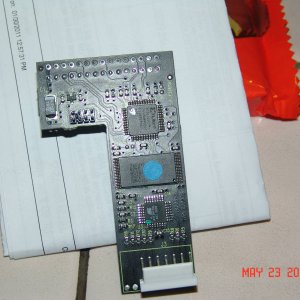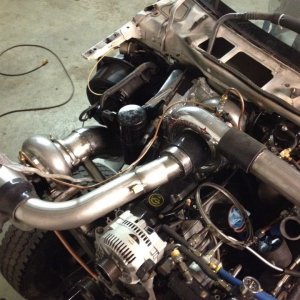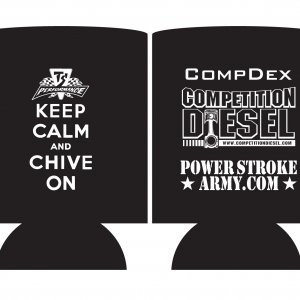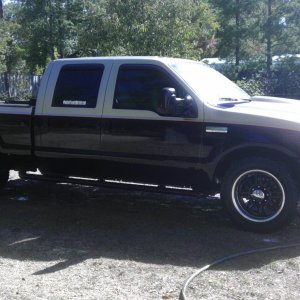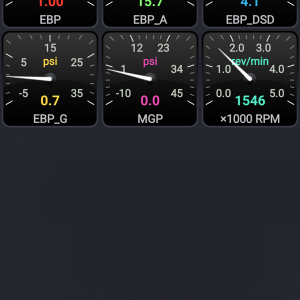Strictly Diesel
Active member
I'm one of those sick morons that doesn't give 2 craps about how fast my daily driver is. I've got several fast toys, my F350 only needs to get me to and from work and tow my trailer. I also have the "economy" illness, always have, sue me.
Anyway, I had tried another brand of intake kit on my 2014 6.7L a while back and noticed that the number of regens per tank of fuel increased with that intake. After some quick measurements I determined that the aftermarket tube was ever so slightly smaller where the mass airflow sensor is located when compared to the stock tube. Datalogs showed that the MAF was reading slightly higher with the aftermarket intake as compared to the stock one, which confirmed what my measurements had told me. The truck ran great, but the extra regens hurt the economy so I put the stock intake back on. It was my theory that the slightly higher MAF was somehow changing fueling, causing the soot concentration to increase more quickly (I actually noticed this on my monitor, within just a few days of installing the intake...but ran 4 full tanks through the truck to confirm). The overall MPG didn't change significantly from stock, but the truck went from a normal of "2 regens per tank" to "3-4 regens per tank", which I didn't care for.
Then I saw people talking about Mikes 5" intake and MPG increases. Since I had not gotten around to testing my MAF vs Regens theory on my own, I decided to move the MAF equation in the other direction using one of Mikes intakes and see what happened.
The MPG during the first tank with the NL intake was about .3mpg better than my "stock" average and about .1mpg worse than the average of the previous few tanks (which included testing an Innovative Diesel Torq2.2 module at 25%...I left the Torq2.2 and didn't change the setting after installing the NL intake). Since this truck is totally stock otherwise, it set a few codes about every other drive cycle, which I just cleared at the monitor and ignored because they were related to MAF and EGR and were caused by the large intake.
During the first tank with the NL intake, regens seemed about normal. The truck did end up firing one regen at an odd time (as compared to usual) and I ended up at 2.5 regens for the entire tank.
Since I always test for a minimum of 2-3 tanks before making another change, I just kept driving. I just filled up Friday after the 2nd full tank of fuel and the truck experienced it's best single tank MPG EVER! I'm baffled about the results right now, as the truck went an entire tank of fuel without a single regen, I've never seen the soot concentration counter move so slowly! I finished the tank at 19.13mpg (hand calculated - dash said 20.1). Within about 15 miles of filling up the truck went into regen, but it started somewhat early (compared to normal) and since I was almost home it only ran about half as long as normal...so I'm counting it as a "half regen" at this time. The second tank also experienced significantly fewer check engine lights, which when coupled with the difference in regens and MPG (as compared to the first tank with the NL intake) makes me think that the PCM "learned" something during the previous tank. I've decided to run a 3rd tank with this configuration before I move on to testing other levels on the Torq2.2...just to confirm the results.
For the record, the MPG stats for this truck are:
Overall Average (every tank): 16.85mpg
"Stock" Average (no towing): 17.35mpg
"Stock" Best (no towing): 18.72mpg
Torq2.2 at 25% Best (no towing): 18.02mpg
No Limit Intake Tank 1: 17.70mpg (with Torq2.2 at 25%)
No Limit Intake Tank 2: 19.13mpg (with Torq2.2 at 25%)
The truck is a crew cab, short bed, 2WD. It lives on the highway as my commute to work is about 25 miles and about 20 miles of that are spent at 70mph on cruise control (very repeatable conditions for MPG testing).
Also, as a side note, I ran about 12 consecutive tanks of fuel with a well known so-called "Distance" fuel additive (2 different concentrations of additive tested over that time) and found that it averaged about .2-.3mpg LESS than running with no fuel additive at all...in case anyone cares.
More info to come...but I thought some might be interested since this topic has come up a few times here.
Anyway, I had tried another brand of intake kit on my 2014 6.7L a while back and noticed that the number of regens per tank of fuel increased with that intake. After some quick measurements I determined that the aftermarket tube was ever so slightly smaller where the mass airflow sensor is located when compared to the stock tube. Datalogs showed that the MAF was reading slightly higher with the aftermarket intake as compared to the stock one, which confirmed what my measurements had told me. The truck ran great, but the extra regens hurt the economy so I put the stock intake back on. It was my theory that the slightly higher MAF was somehow changing fueling, causing the soot concentration to increase more quickly (I actually noticed this on my monitor, within just a few days of installing the intake...but ran 4 full tanks through the truck to confirm). The overall MPG didn't change significantly from stock, but the truck went from a normal of "2 regens per tank" to "3-4 regens per tank", which I didn't care for.
Then I saw people talking about Mikes 5" intake and MPG increases. Since I had not gotten around to testing my MAF vs Regens theory on my own, I decided to move the MAF equation in the other direction using one of Mikes intakes and see what happened.
The MPG during the first tank with the NL intake was about .3mpg better than my "stock" average and about .1mpg worse than the average of the previous few tanks (which included testing an Innovative Diesel Torq2.2 module at 25%...I left the Torq2.2 and didn't change the setting after installing the NL intake). Since this truck is totally stock otherwise, it set a few codes about every other drive cycle, which I just cleared at the monitor and ignored because they were related to MAF and EGR and were caused by the large intake.
During the first tank with the NL intake, regens seemed about normal. The truck did end up firing one regen at an odd time (as compared to usual) and I ended up at 2.5 regens for the entire tank.
Since I always test for a minimum of 2-3 tanks before making another change, I just kept driving. I just filled up Friday after the 2nd full tank of fuel and the truck experienced it's best single tank MPG EVER! I'm baffled about the results right now, as the truck went an entire tank of fuel without a single regen, I've never seen the soot concentration counter move so slowly! I finished the tank at 19.13mpg (hand calculated - dash said 20.1). Within about 15 miles of filling up the truck went into regen, but it started somewhat early (compared to normal) and since I was almost home it only ran about half as long as normal...so I'm counting it as a "half regen" at this time. The second tank also experienced significantly fewer check engine lights, which when coupled with the difference in regens and MPG (as compared to the first tank with the NL intake) makes me think that the PCM "learned" something during the previous tank. I've decided to run a 3rd tank with this configuration before I move on to testing other levels on the Torq2.2...just to confirm the results.
For the record, the MPG stats for this truck are:
Overall Average (every tank): 16.85mpg
"Stock" Average (no towing): 17.35mpg
"Stock" Best (no towing): 18.72mpg
Torq2.2 at 25% Best (no towing): 18.02mpg
No Limit Intake Tank 1: 17.70mpg (with Torq2.2 at 25%)
No Limit Intake Tank 2: 19.13mpg (with Torq2.2 at 25%)
The truck is a crew cab, short bed, 2WD. It lives on the highway as my commute to work is about 25 miles and about 20 miles of that are spent at 70mph on cruise control (very repeatable conditions for MPG testing).
Also, as a side note, I ran about 12 consecutive tanks of fuel with a well known so-called "Distance" fuel additive (2 different concentrations of additive tested over that time) and found that it averaged about .2-.3mpg LESS than running with no fuel additive at all...in case anyone cares.
More info to come...but I thought some might be interested since this topic has come up a few times here.

